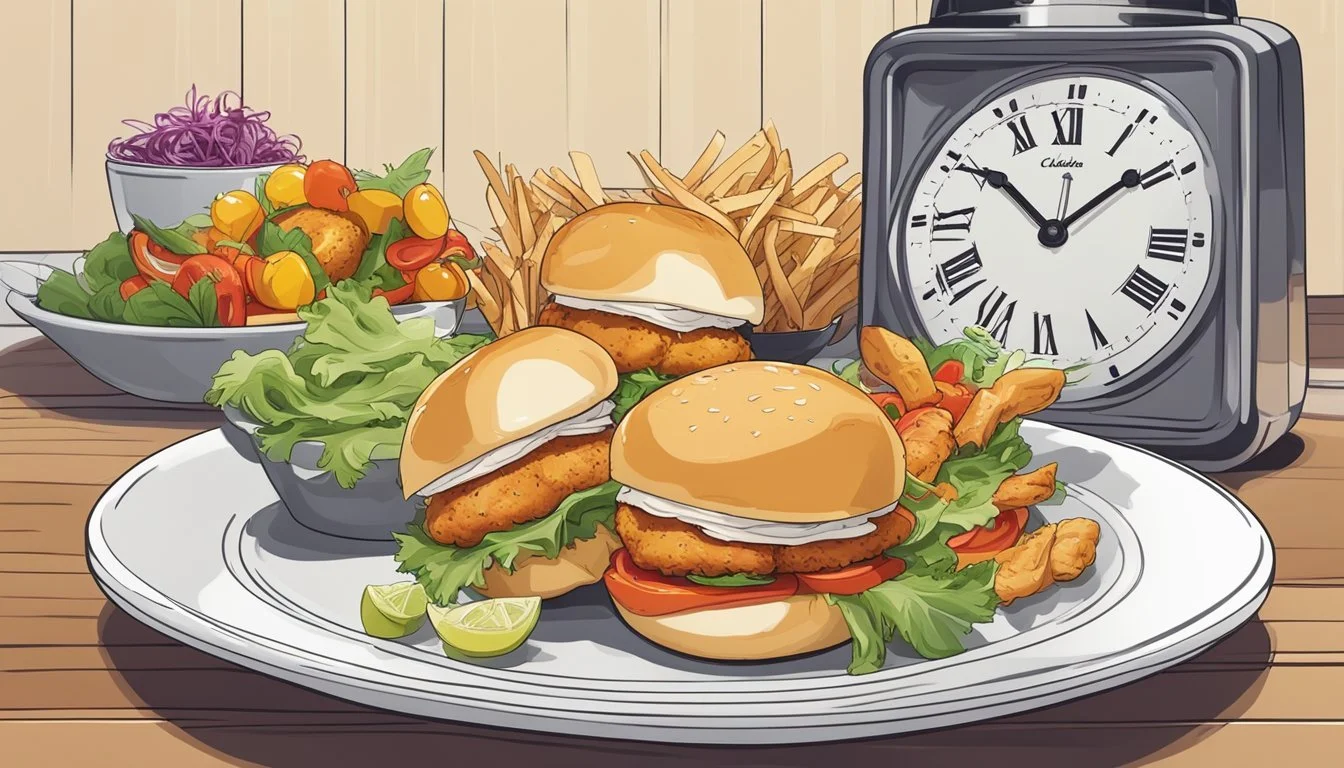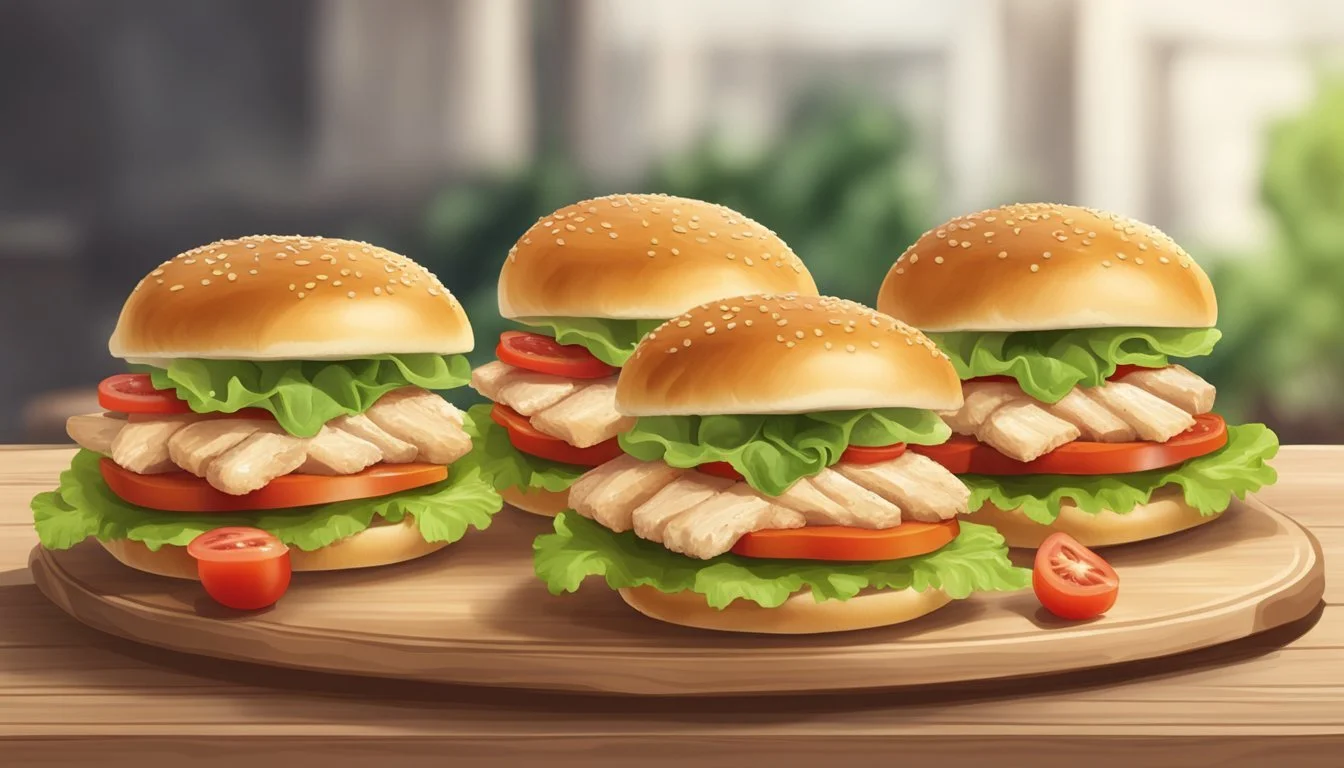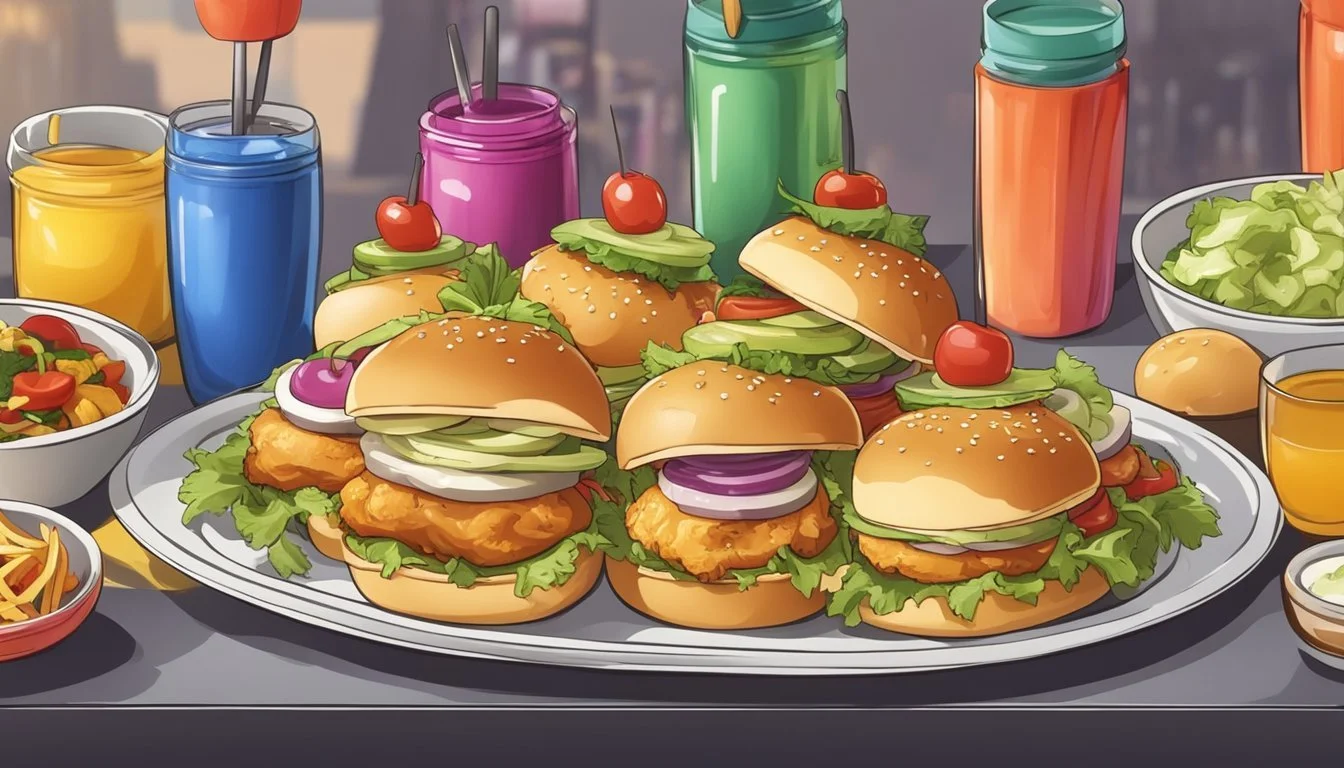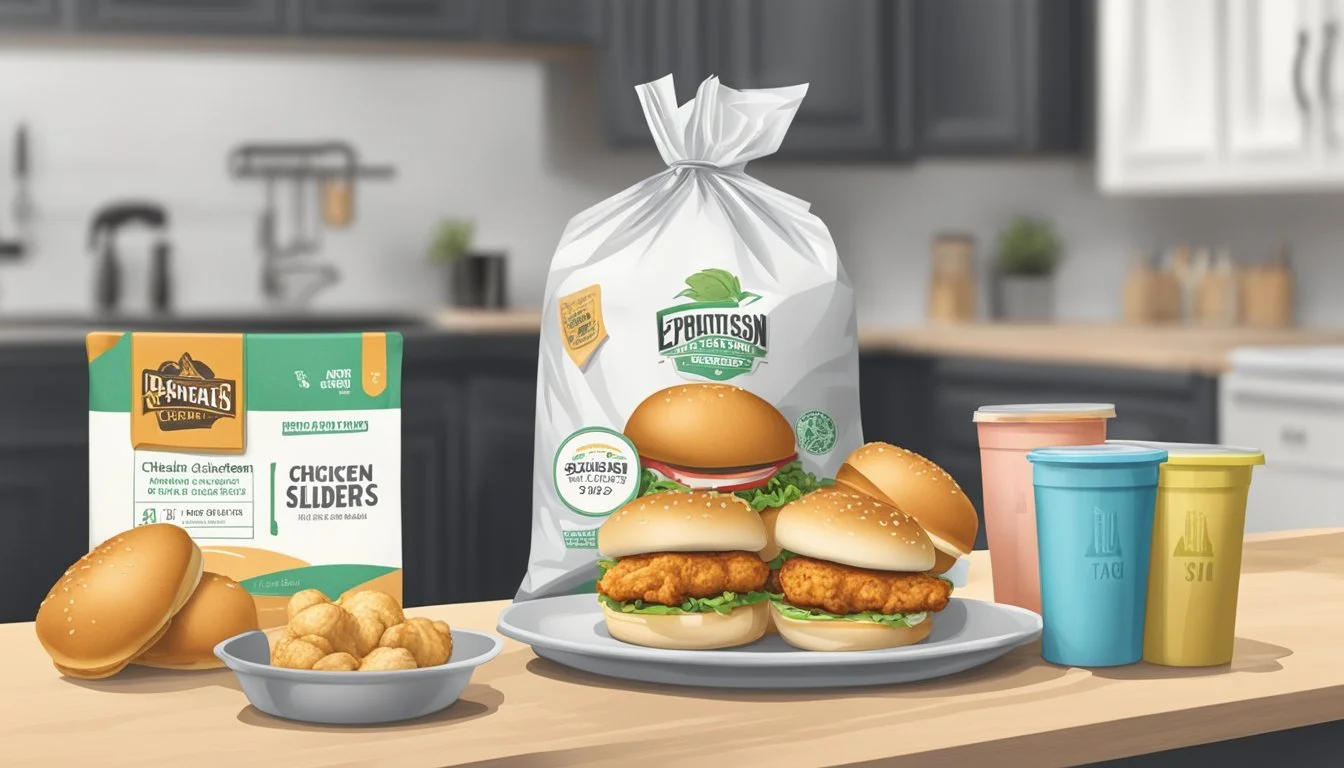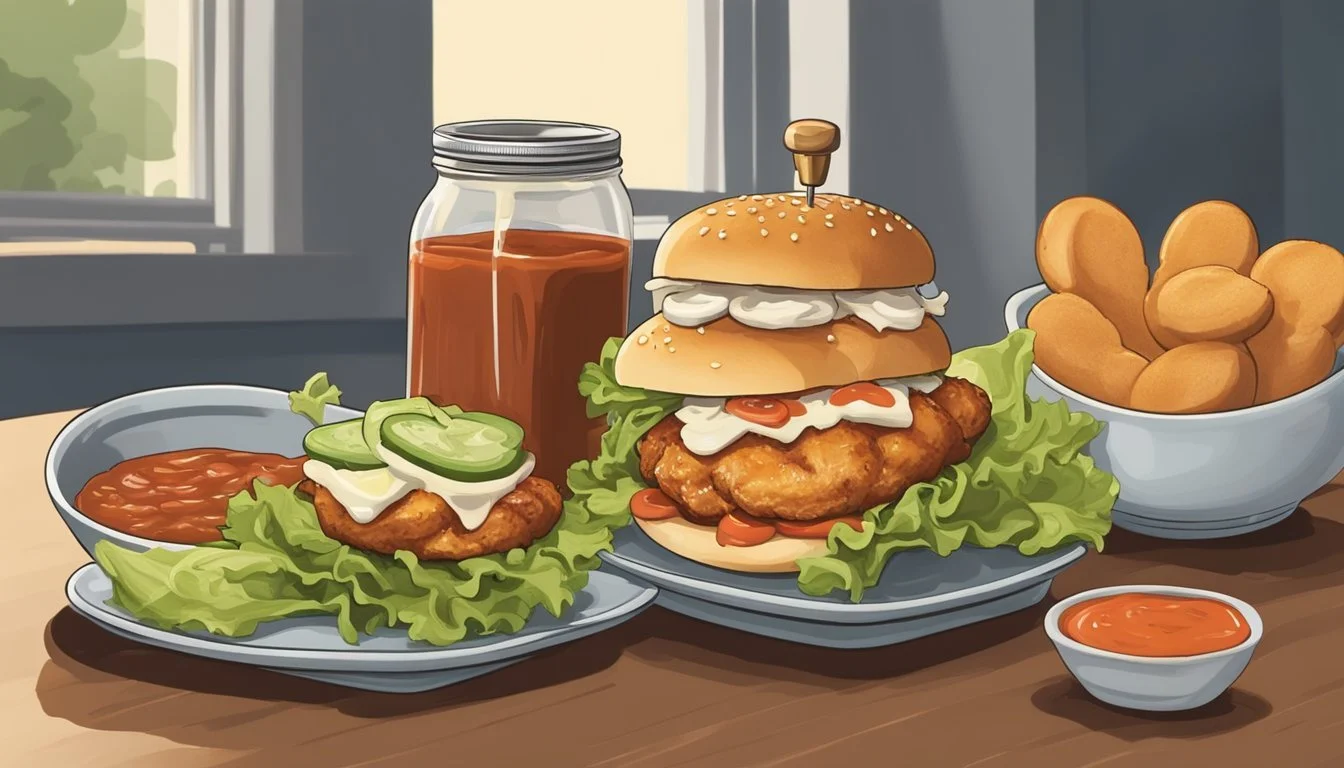How Long Do Chicken Sliders Last?
Safe Storage & Shelf Life Guide
Chicken sliders are a popular and tasty option for any gathering, providing both flavor and convenience. These bite-sized sandwiches can include a variety of ingredients such as cheddar cheese, mozzarella cheese, garlic, and Hawaiian rolls, making them a versatile choice for different tastes. The combination of these ingredients not only offers a satisfying meal but also ensures nutritional benefits from the chicken and vegetables often included.
The freshness and safety of your chicken sliders depend greatly on storage methods. When stored properly in the refrigerator, chicken sliders can last up to three to four days. It's crucial to keep them in an airtight container to maintain quality and prevent any cross-contamination. If you plan to keep them longer, consider freezing them, which can extend their life to about two to three months.
These practices ensure that the sliders remain safe to eat while retaining their delicious flavors. Whether you're preparing snacks for a party or simply meal prepping for the week, understanding how to store chicken sliders effectively is key to preserving their taste and nutritional value.
Understanding Chicken Sliders
Chicken sliders are a popular dish for various meals, including lunch, dinner, and appetizers. They are often a family favorite, especially on game days, due to their versatility and flavorful combinations.
Definition and Popularity
Chicken sliders are small sandwiches made with slider buns and filled with a specifically prepared chicken mixture. The popularity of chicken sliders stems from their convenience and the appealing, compact size making them perfect for casual gatherings or as appetizers.
These sliders are a staple at many social events, including game days and family parties, due to their ease of preparation and ability to serve a crowd with minimal effort.
Typical Ingredients and Variations
The primary ingredient in chicken sliders is, of course, chicken, which can be cooked and seasoned in various ways. Common ingredients include:
Chicken (shredded or sliced)
Cheese
Garlic
Onion
Seasoning
Slider buns
Variations on chicken sliders are plentiful. Some popular versions feature BBQ sauce and mayo mixed with shredded chicken, while others may include sautéed vegetables like bell peppers and onions, topped with melted cheese. Hawaiian rolls are particularly popular for their sweet flavor, complementing the savory fillings.
Nutritional Information
The nutritional content of chicken sliders can vary significantly based on the ingredients and preparation method. A standard chicken slider with basic ingredients typically contains calories ranging from 150-300 per slider.
Nutritional components can include:
Protein from the chicken
Carbs from the slider buns
Fats from added cheese and butter
To maintain a healthier profile, one might use lean chicken breast, whole grain buns, and minimal butter and cheese. Reading specific recipe details is essential to understand the exact nutrition information per serving.
Preparation Techniques
To make delicious chicken sliders, it is essential to focus on cooking methods, proper assembly, and baking tips. These steps will ensure the sliders are flavorful and cooked to perfection.
Cooking Methods
Chicken sliders can be made using various cooking techniques. Chicken breasts can be grilled, baked, or cooked in a crock pot until tender. For a quick option, use rotisserie chicken. Shred the chicken finely for even distribution. Bacon, if used, can be cooked on a stovetop until crispy and set aside.
Combining different cooking methods like grilling the chicken and baking the sliders can enhance the flavor profiles. Grilling adds a smoky taste, while baking ensures everything is melded together nicely.
Assembling the Sliders
Assembling the sliders properly is crucial. Start by slicing slider buns or Hawaiian rolls horizontally. Spread a thin layer of melted butter on the buns for a crisp texture. Place a layer of shredded or chopped rotisserie chicken on the bottom buns. Add cheese and other desired toppings like veggies or bacon.
Make sure the toppings are evenly distributed. Cover with the top layer of buns and press down gently to secure. Use a baking dish or baking sheet to hold the sliders together during the baking process.
Baking and Seasoning Tips
Preheat the oven to 350°F (175°C). Place the assembled sliders in the baking dish and brush the tops with melted butter. Sprinkle with seasonings like Italian seasoning and garlic salt for additional flavor.
Cover the sliders with aluminum foil to keep them moist and bake for 15-20 minutes. Remove the foil and bake for an additional 5-10 minutes until the tops are golden brown and the cheese is melted. For added crispiness, switch to broil for the last 2 minutes. Customizing seasonings and toppings can significantly influence the taste, making each slider unique and delicious.
Storing Chicken Sliders
Proper storage is essential to maintain the quality and safety of chicken sliders, whether they're made with shredded chicken, rotisserie chicken, or leftovers. Knowing the optimal ways to store and reheat can extend their freshness and enhance convenience.
Proper Storage Techniques
Chicken sliders should be stored in an airtight container to preserve moisture and prevent contamination. If you do not have airtight containers, aluminum foil or plastic wrap can also be used, but ensure they are tightly sealed. For best results, cover the sliders on a tray before wrapping or enclosing, especially if you're storing multiple layers.
When freezing sliders, wrap them in aluminum foil first, then place them in a freezer bag or an airtight container. The dual-layer protection minimizes freezer burn and extends shelf life. Label containers with the storage date to keep track of their age.
Shelf Life
Chicken sliders can last up to 5 days in the refrigerator if stored correctly in an airtight container. Ensure they are promptly refrigerated within 2 hours of being cooked to prevent bacterial growth. If left out longer, their quality and safety may be compromised.
For longer storage, freezing is ideal. Sliders can be kept in the freezer for up to 3 months. This applies whether they are made from shredded chicken, rotisserie chicken, or other types. Always inspect for signs of spoilage, such as off smells or mold, before consuming, especially if kept near the end of their storage period.
Reheating Instructions
Reheating chicken sliders properly ensures they are tasty and safe to eat. The oven is preferred for retaining texture. Preheat to 350°F (175°C), place sliders on a baking sheet, and cover loosely with aluminum foil. Heat for about 10-15 minutes or until warmed through.
For a quicker option, use the microwave. Place sliders on a microwave-safe plate, cover with a damp paper towel to maintain moisture, and heat on medium for about 60-90 seconds. For best results, reheat no more than one or two at a time to ensure even heating.
Creative Twists and Serving Ideas
Enhance your chicken sliders with a variety of creative twists and serving ideas to make them the star of any meal. From diverse slider varieties and unique toppings to delicious side dishes and theme-focused suggestions, there are numerous ways to elevate your chicken sliders.
Slider Varieties and Toppings
Different slider recipes cater to varied tastes. Chicken Parmesan Sliders feature marinara sauce and mozzarella cheese. BBQ Chicken Sliders offer a smoky, tangy flavor when paired with BBQ sauce. For a tropical twist, try Hawaiian Roll Chicken Sliders, combining sweet rolls and savory chicken.
Toppings are key to personalization. Some popular options include tomato, lettuce, and pickles for a classic feel. Ranch dressing can add a creamy touch, while melted butter brushed on sliders before baking adds richness. Mayo-based sauces, such as chipotle mayo, provide a smoky kick.
Accompaniments and Sides
Pairing chicken sliders with the right sides can enhance the meal. French fries or sweet potato fries are excellent choices for added crunch. Potato salad, whether classic or loaded with extras, adds a hearty touch. For something lighter, a veggie tray with dip can offer a refreshing balance.
For more substantial sides, consider macaroni salad or hash brown potato casserole. These pair well with sliders for more filling servings, making them great options for a satisfying weeknight dinner or to serve at parties.
Theme-Focused Suggestions
Tailoring chicken sliders to specific themes can create a cohesive and memorable meal. For a game day, Buffalo Chicken Sliders with ranch or blue cheese dressing offer a spicy treat. Ham and Cheese Sliders are well-suited for casual gatherings and add a twist to the traditional chicken slider.
Incorporating unique ideas, such as sliders with aioli and roasted vegetables for a gourmet touch, can impress guests. For a summer BBQ, Hawaiian Roll Chicken Sliders with pineapple relish and coleslaw offer a delightful tropical flavor, perfect for outdoor events.
Using these ideas, chicken sliders can be transformed into versatile, crowd-pleasing dishes suitable for any occasion.
Health and Safety Considerations
When preparing and storing chicken sliders, it's essential to be mindful of allergens and follow food safety best practices to ensure they remain safe to eat.
Allergen Information
Chicken sliders can contain common allergens such as wheat from the buns, dairy from cheese, and eggs used as binders or in sauces. Always check ingredient labels if pre-packaged items are used. Inform guests about potential allergens and consider alternative ingredients for those with allergies. Using gluten-free buns or dairy-free cheese can make the sliders accessible to more people.
Cross-contamination is a significant concern. Use separate utensils and surfaces for allergen-containing and allergen-free ingredients. Proper kitchen hygiene can reduce the risk of allergen exposure and help keep meals safe for everyone.
Food Safety Best Practices
Proper storage of chicken sliders is crucial. Refrigerate them at 40°F (4°C) or lower within two hours of cooking. According to USDA guidelines, cooked chicken can be stored in the refrigerator for 3 to 4 days. Use airtight containers to extend shelf life and prevent contamination.
When reheating, ensure the internal temperature reaches 165°F (74°C) using a meat thermometer. This kills harmful bacteria that may have developed during storage. Avoid leaving sliders out at room temperature for extended periods, as this increases the risk of bacterial growth.
Maintaining kitchen cleanliness is paramount. Wash hands, utensils, and surfaces thoroughly before and after handling raw chicken to prevent cross-contamination. By following these practices, you can ensure that your chicken sliders are both delicious and safe to eat.
Troubleshooting Common Issues
Preparation and cooking techniques are key to avoiding common pitfalls in making chicken sliders. Focus on preventing dryness or sogginess and ensuring even cooking to achieve the best results.
Preventing Dryness or Sogginess
Dryness in chicken sliders can stem from overcooking. Monitor the internal temperature using an instant-read meat thermometer and aim for 165°F (74°C). Mixing shredded chicken with a moist ingredient like mayo or cream cheese helps retain moisture.
To avoid sogginess, don't overload with condiments.
Place the sliders on a baking sheet or grill to allow air circulation.
Using a baking dish, bake sliders briefly until just heated through to maintain texture.
Ensuring Even Cooking
Even cooking is essential for the perfect chicken slider. Uniformly slice the chicken to ensure consistent size and shape, avoiding thin or overly thick pieces. Preheating the oven or grill ensures that sliders cook evenly from the start.
Space sliders evenly on a baking sheet.
Rotate the sliders halfway through cooking.
Brushing sliders with melted butter before cooking helps promote even browning.
Uniformity and careful temperature control contribute significantly to achieving well-cooked chicken sliders.
Tips and Tricks for Perfect Chicken Sliders
Creating the ideal chicken sliders involves focusing on three key areas: presenting and serving, enhancing flavors and textures, and optimizing your preparation techniques. Whether you are cooking for a crowd or a small gathering, these tips will help you achieve delicious and impressive results.
Serving Sizes and Presentation
A great chicken slider starts with the right serving size and presentation. Slider buns are smaller than regular buns, so plan for 2-3 sliders per adult serving. When preparing, slice the rolls horizontally without separating them vertically to keep assembly easy and uniform.
Using a serrated knife ensures clean, even cuts. Line the sliders on a tray for easy baking and serving. Consider garnishing with pickled jalapenos and melted cheese for added visual appeal. Serving sliders with sides like cole slaw or potato salad enhances the overall meal.
Maximizing Flavor and Texture
To maximize flavor and texture, use chicken thighs as they provide a juicier, more flavorful meat compared to breasts. Season the chicken generously with garlic powder, seasoning salt, and hot sauce before cooking. For a softer, melt-in-your-mouth texture, slow-cook or use a rotisserie chicken.
Incorporate melty cheese like provolone or cheddar to add richness. Apply a mix of garlic butter or garlic salt on the buns before baking for extra flavor. For variety, experiment with toppings like pickled jalapenos or crispy fried onions to add crunch and spice.
Advanced Preparation Techniques
Advanced techniques can elevate your chicken slider recipe. Prepare the chicken ahead of time to save time on the day of your event. Shred the chicken using two forks or a hand mixer for an even consistency. Marinate the chicken overnight in barbecue or teriyaki sauce to deepen the flavor.
Use a combination of fresh and store-bought elements; reheating rotisserie chicken with added spices can be a time-saver. Utilizing a baking dish ensures even cooking and keeps the sliders warm. Brushing the tops of the buns with melted garlic butter just before baking can create a beautiful, golden finish.
By following these tips and tricks, anyone can create chicken sliders that are not only delicious but also visually appealing and ready for any gathering.

